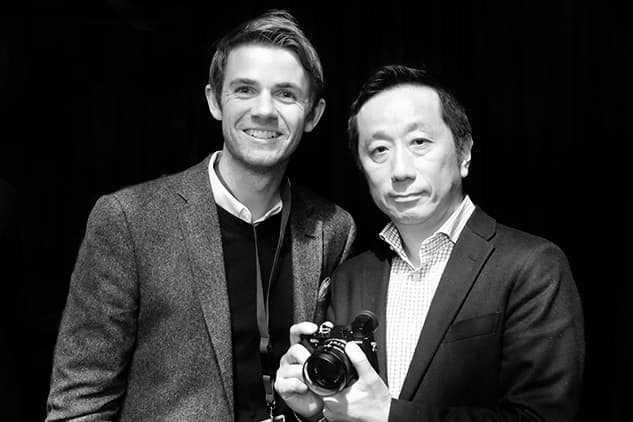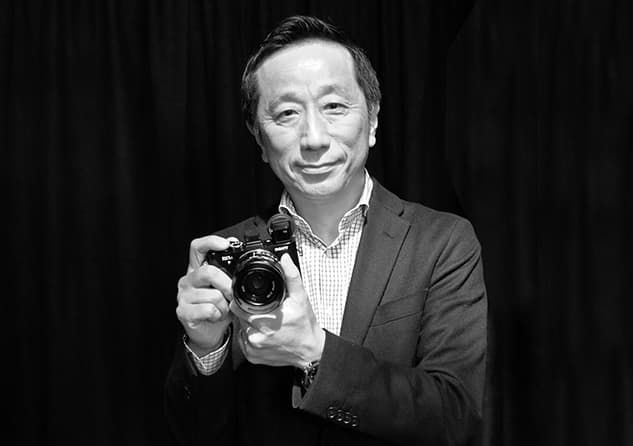This week, while attending a Sony press event in Munich to try out the new A7S II and get hands on with the new Sony Cyber-shot RX1R II, we caught up with Kimio Maki, Senior General Manager of the Digital Imaging Business Group, Sony Corporation. As well as answering questions about both cameras, Kimio Maki described Sony’s future strategy.
AP: In the space of a year we’ve seen Sony refresh its A7-series with three new models, the Alpha 7 Mark II, the Alpha 7R Mark II and now the Alpha 7S Mark II. Can you explain who each camera is best for and why?
KM: If you want to take a picture in extremely dark conditions you need the sensitivity. For those who want to take a picture in the landscape, the customer needs the resolution and for those who want to take a picture of a moving object they need speed. It all depends on the subject they want to take and it comes down to customer choice.
AP: What is Sony’s future strategy?
We’re going to keep on creating new innovations which have never existed before. We’re challenging the challengers in the market. It’s all based on the customer demand and the customer dream.
AP: What’s the reasoning behind the sensor being back illuminated on the Alpha 7R Mark II, but not the Alpha 7S Mark II?
KM: We called the Alpha 7R what it is because the letter R stands for high resolution. Resolution is R and sensitivity is S, that’s what we’re working to. In order to get the resolution we didn’t want to ruin the sensitivity, therefore in order to harmonise the resolution and sensitivity we needed some new technology. That comes in the form of the back illuminated sensor.
AP: Can you summarise the benefit of choosing an Alpha 7-series camera over a DSLR in a single sentence?
KM: Size. It’s all about size – it’s smaller and lighter. That’s the main reason of choosing our products.
AP: There are still some who prefer the feel of a DSLR and in their hands opposed to a Sony Alpha 7-series camera. What would you say to these photographers?
KM: If you don’t mind the feel of a camera that’s bigger and heavier please carry on. If you want to take a lighter and smaller camera, the Sony Alpha 7-series might be preferred. As long as the quality is the same, smaller and lighter is better I think. That is our policy.
AP: Has Sony conducted any research into how many professionals use Sony mirrorless cameras?
KM: Lots of professionals have started to use our cameras.
AP: 2015 will be remembered as the year that many high-resolution cameras hit the market, the Sony Alpha 7R II being a prime example. Where does Sony see the acceptable megapixel limit, and has this been reached?
KM: It’s a very difficult question. We are the manufacturer and the demand should be decided by the customers. If the customer needs 100-million pixels, if the customer needs more than 100-million pixels, we will create such kind of a product. Right now we don’t get a strong demand from the customers for this.
AP: It has long been said that Sony will strengthen its full-frame lens line-up to 20 lenses by 2016. Can we still expect Sony to hit this target?
KM: Yes. We’re aiming to hit that target. I can’t guarantee exactly when in 2016 that will happen though.
AP: How important is it to be a leading innovator in the photography industry?
KM: I don’t feel that we are leading, we are challenging. The champions in the industry have their technologies, brand image and everyone loves Canon and Nikon. We (Sony) have to show the reason why we are here therefore we have to keep on creating and produce new innovations that have never existed before. If we don’t the customer won’t see our products.
AP. In general market terms, where do you see room for improvement in CSCs regarding future technology improvements?
KM: As I previously said it comes from the customers voice. The 7R Mark II and 7S Mark II are our best products right now therefore we have to think about the future based on collecting customers data and their opinions
AP: Has the new Sony CyberShot RX1R II come about from professionals talking to Sony and do professionals want these new features that have been introduced?
KM: Yes, we checked. This is the second phase of the RX1 series and we checked the customer demand, especially from professional photographers. Lots of photographers are using the RX1 series camera to achieve preciseness and produce high resolution images. Then they said, what is next? We asked them. More resolution, raise the resolution they said, therefore we’ve tried it. The lens has got very good preciseness. The resolution at the corners is the same as the resolution in the centre. A camera like this has never existed before. This product has the number one resolution.

AP’s Michael Topham with Kimio Maki, Senior General Manager of the Digital Imaging Business Group, Sony Corporation at the launch of the Sony RX1R II in Munich, Germany
Sony Cyber-shot RX1R II vs Leica Q (Typ 116)
To find out more about the new Sony Cyber-shot RX1R II and how it stacks up against the Leica Q (Typ 116), don’t miss our Sony RX1R II vs Leica Q (Typ 116) comparison article that looks at all the key differences between the two.







